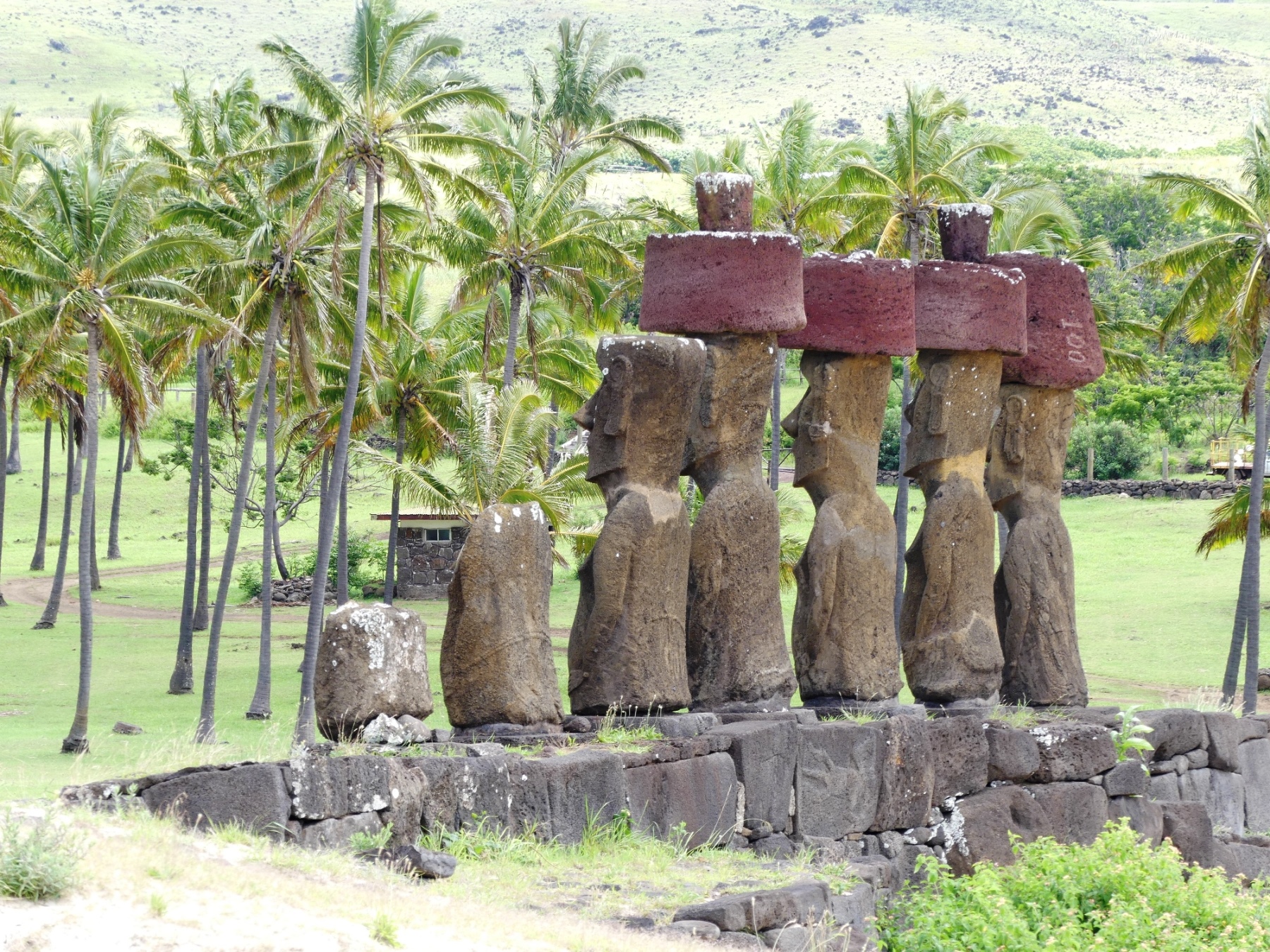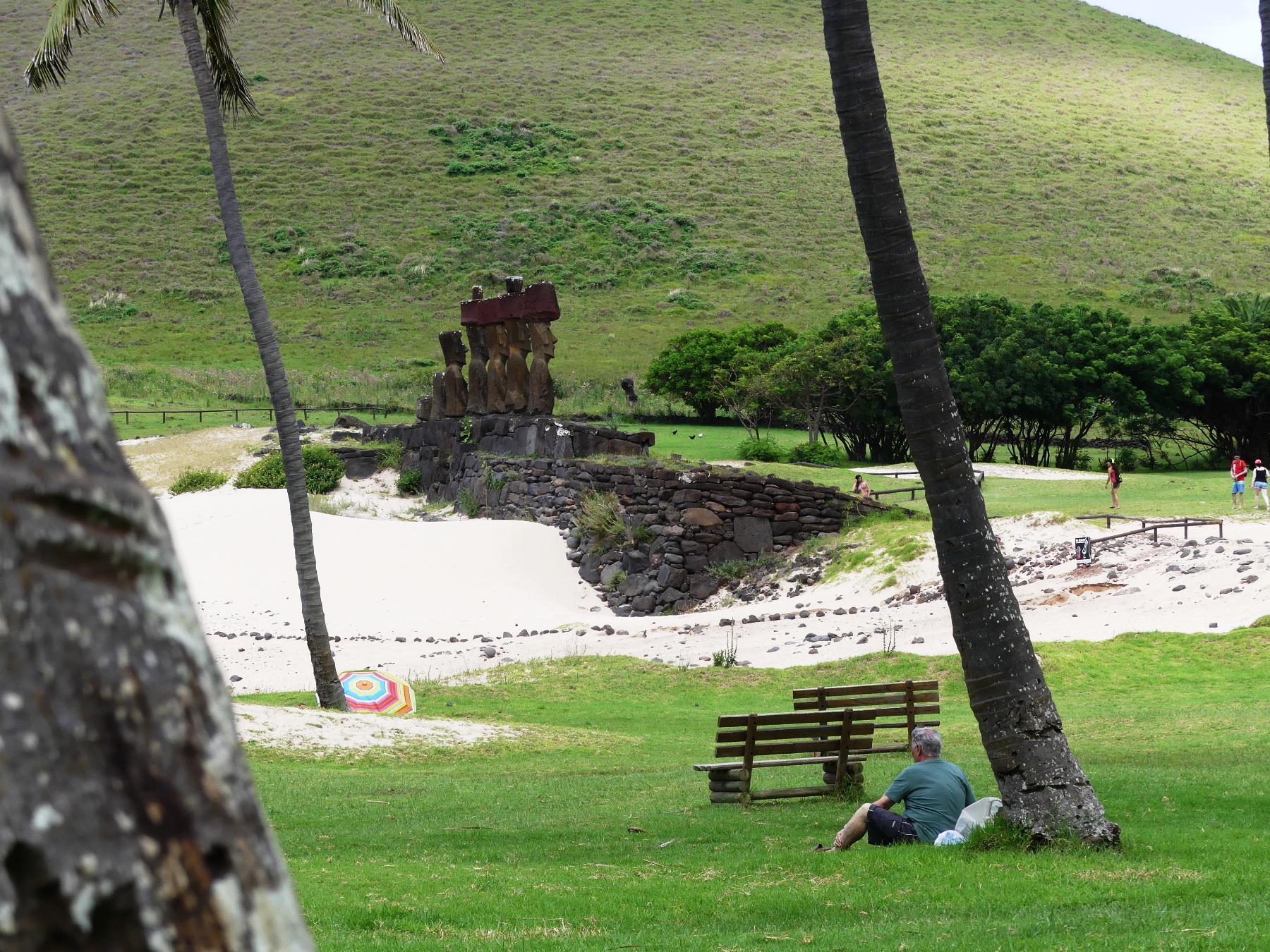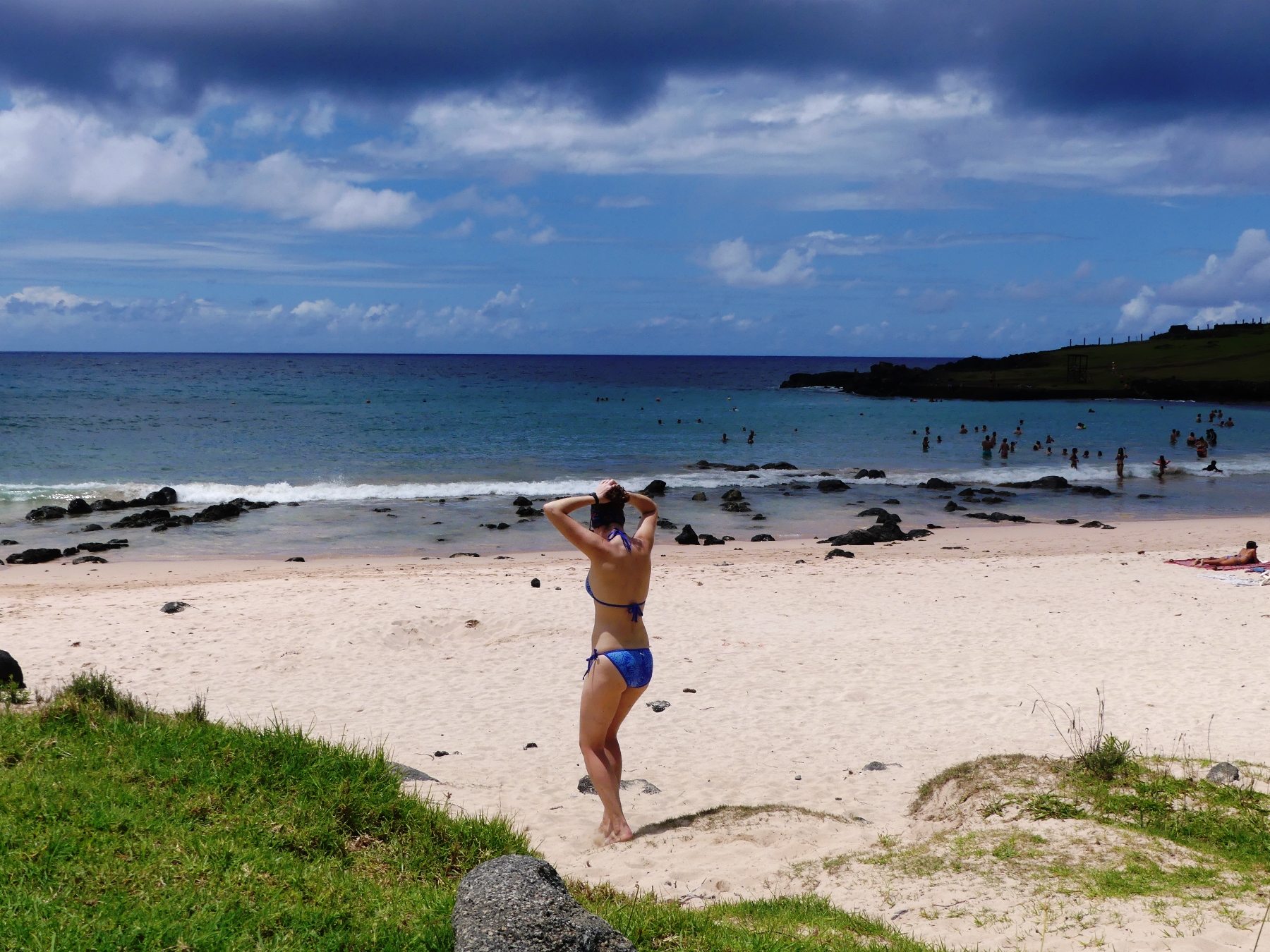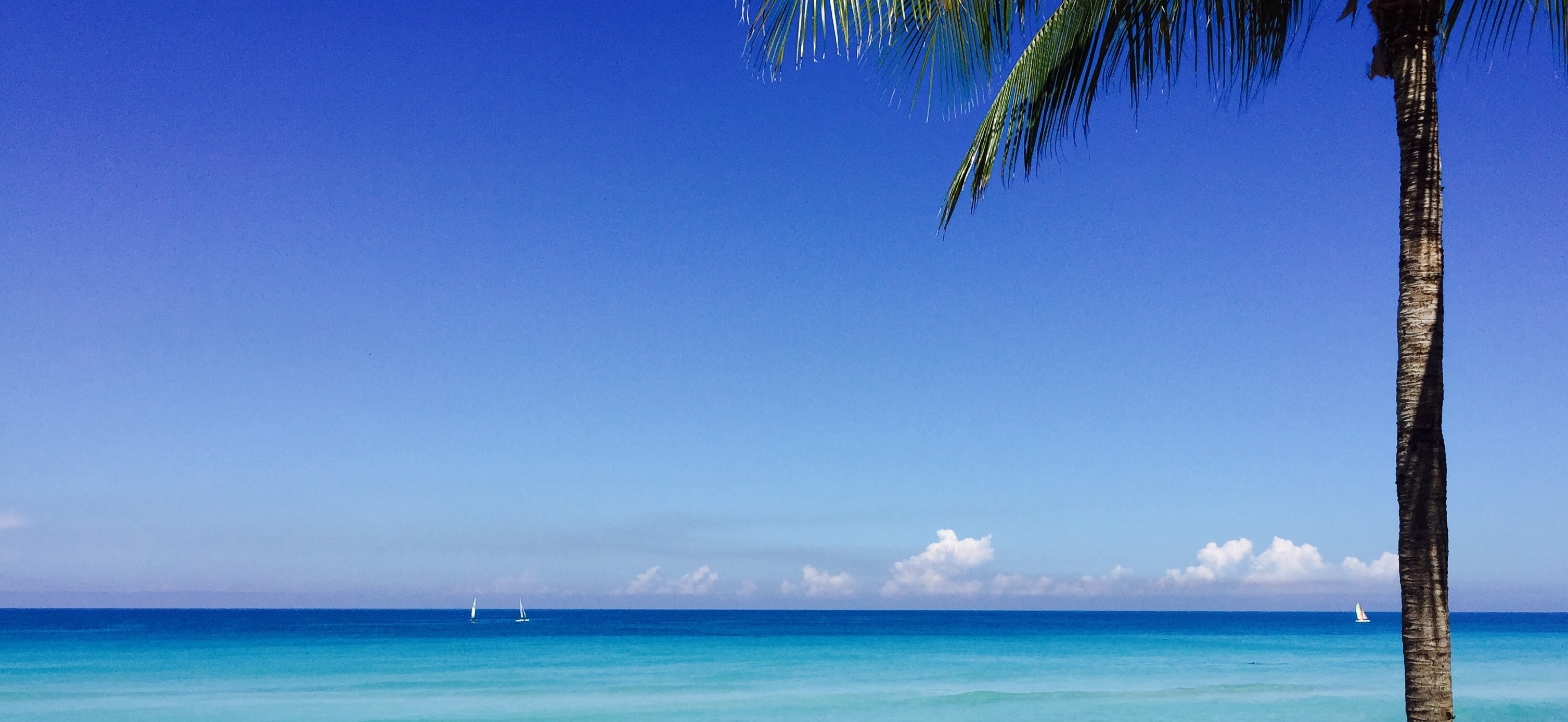Take two. We were outside our hotel again waiting for the tour bus. This time it arrived, carrying about 10 other tourists from France, Spain and the US. After our scooter tour yesterday, I had a lot of questions saved up so was keen to speak to our local guide. She didn’t know what she was in for. For example, given that there are no rivers on the island, how do they provide drinking water? There is no harbour, how do they import cars or building materials or larger items that cannot be airlifted. I had questions about the moai and how they were transported to the ahu. At the end of the day, let’s just say I got my money’s worth. The tour guide answered all my questions and then some.
Our first stop was Rano Raraku, known as the moai factory. It is the quarry where 95% of the figures were carved over hundreds of years and still contains over 50 in various stages of construction. What an incredibly powerful place. Giant heads lie broken; others still attached to the mountain face; some looked perfect and ready for transport to an ahu; others half forgotten. If you could ignore the neatly cut grass and pathways, you could almost imagine the original workforce would return tomorrow to resume their work. Everything was, quite literally, just abandoned one day.
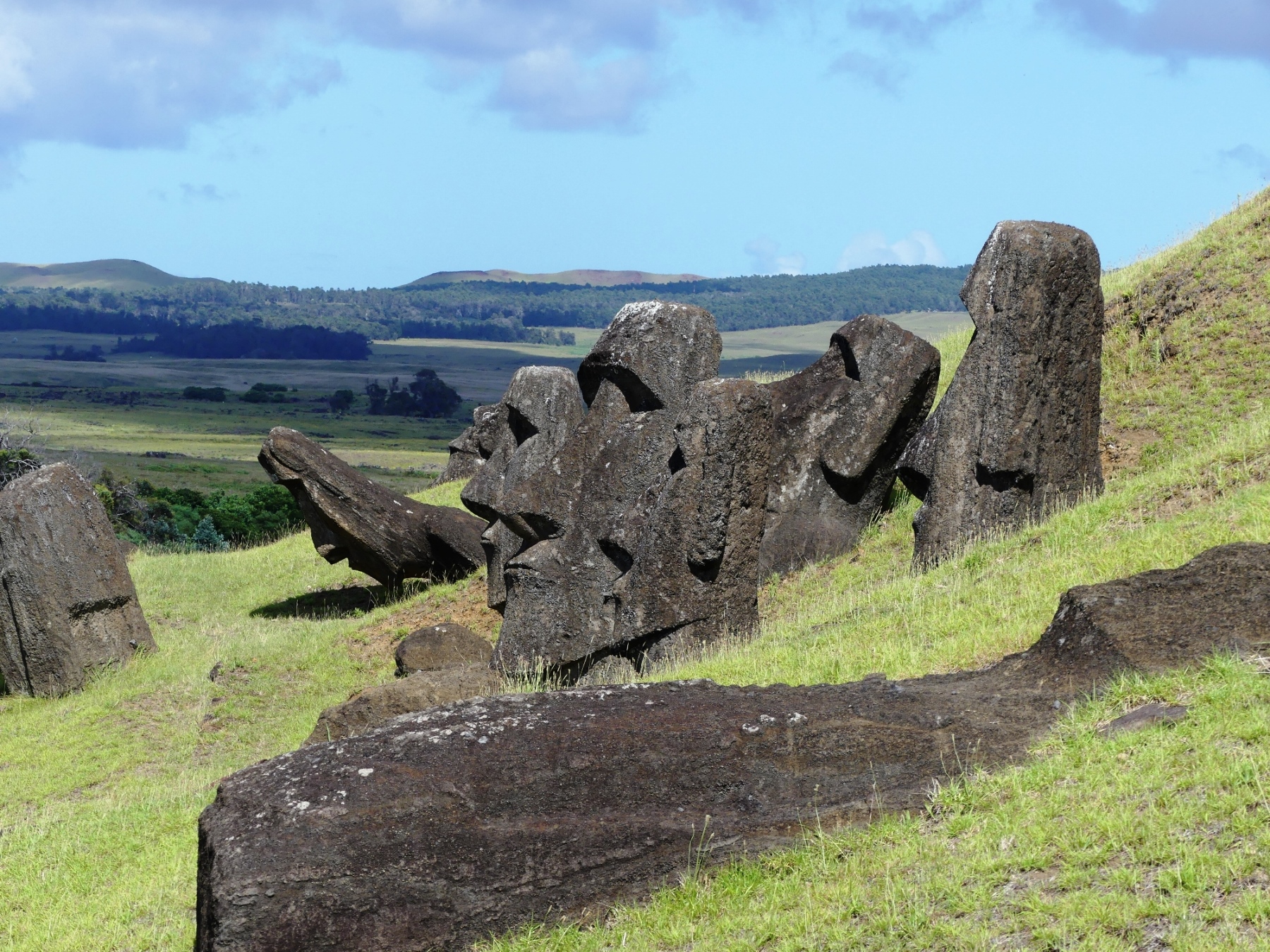
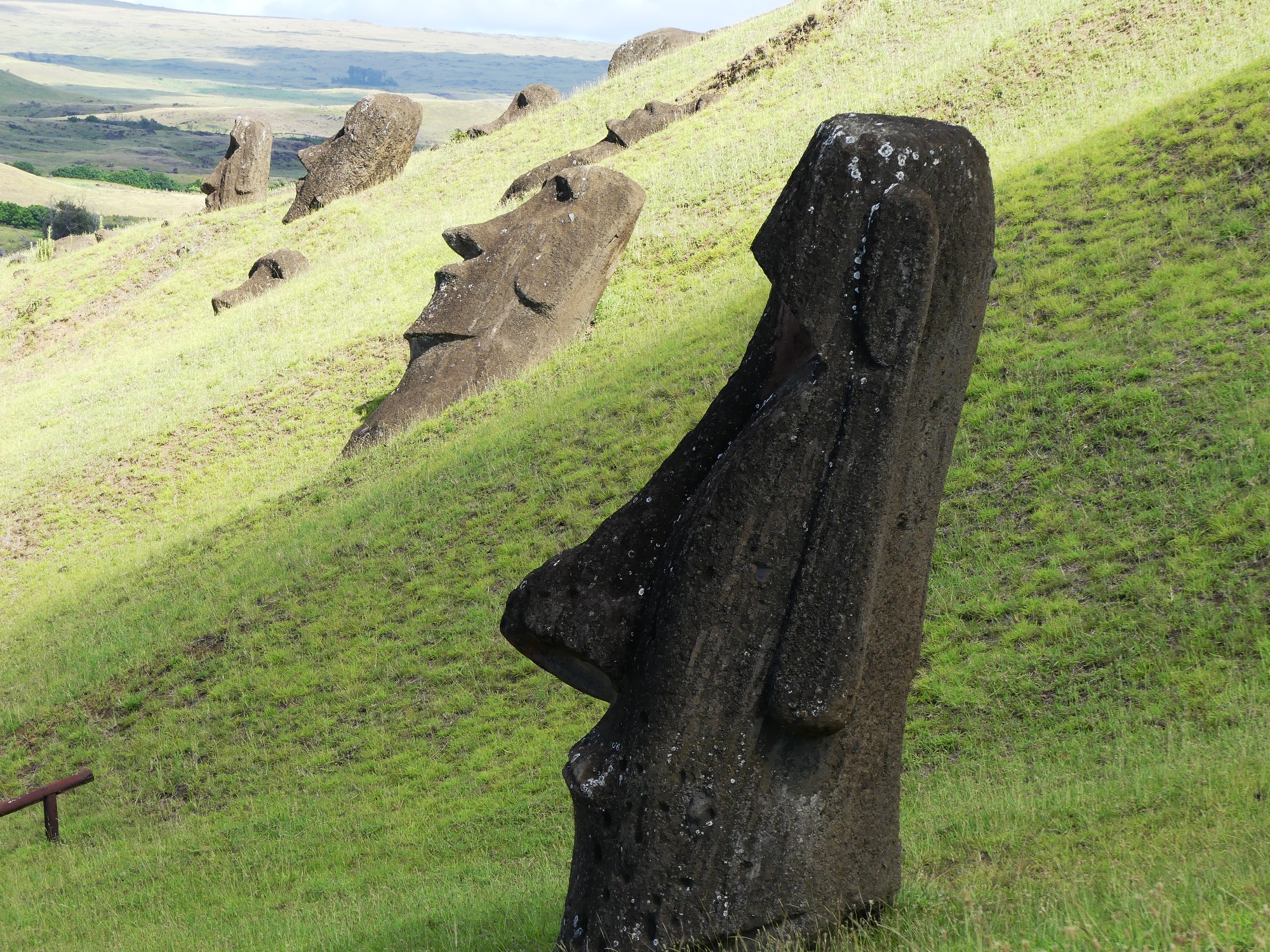
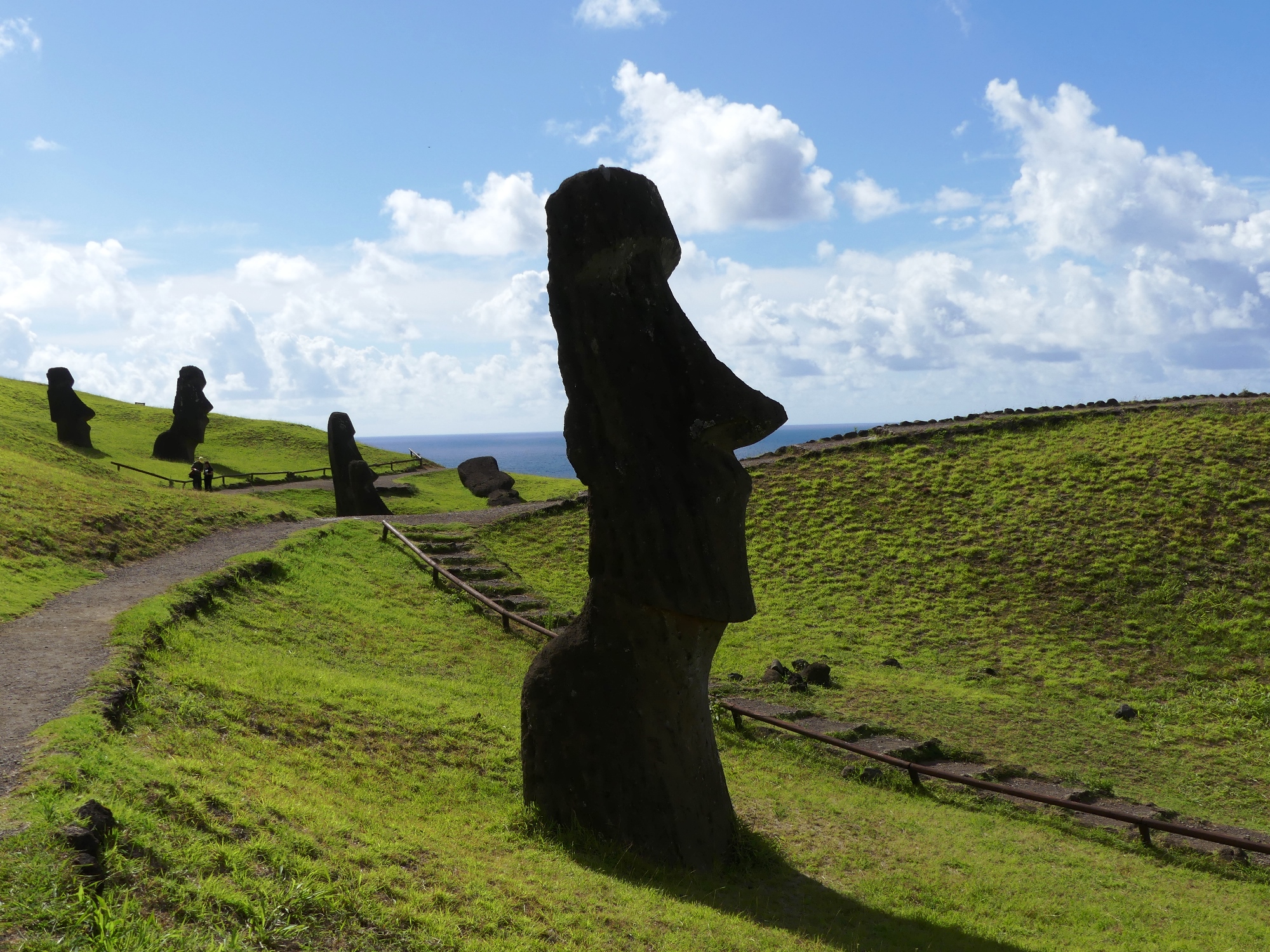
Getting so close you realise the craftsmanship involved and the sheer size of the operation. The biggest figure – yet to be fully carved – is over 21m tall. All of them were carved by hand, using basic stone tools, but they were perfectly symmetrical and proportioned. Apparently there was a designer (aka creative director) at the factory who oversaw the carving work.
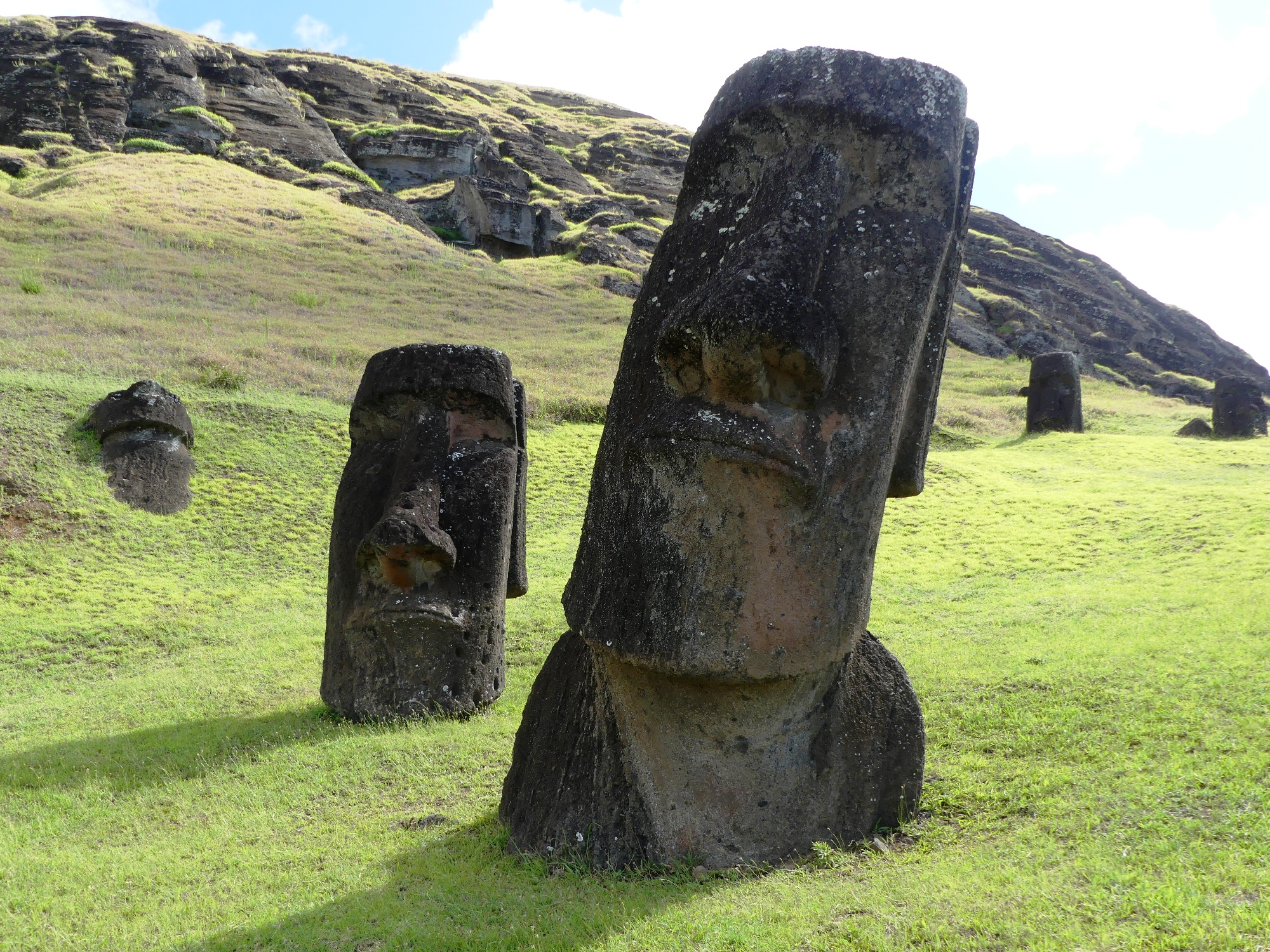
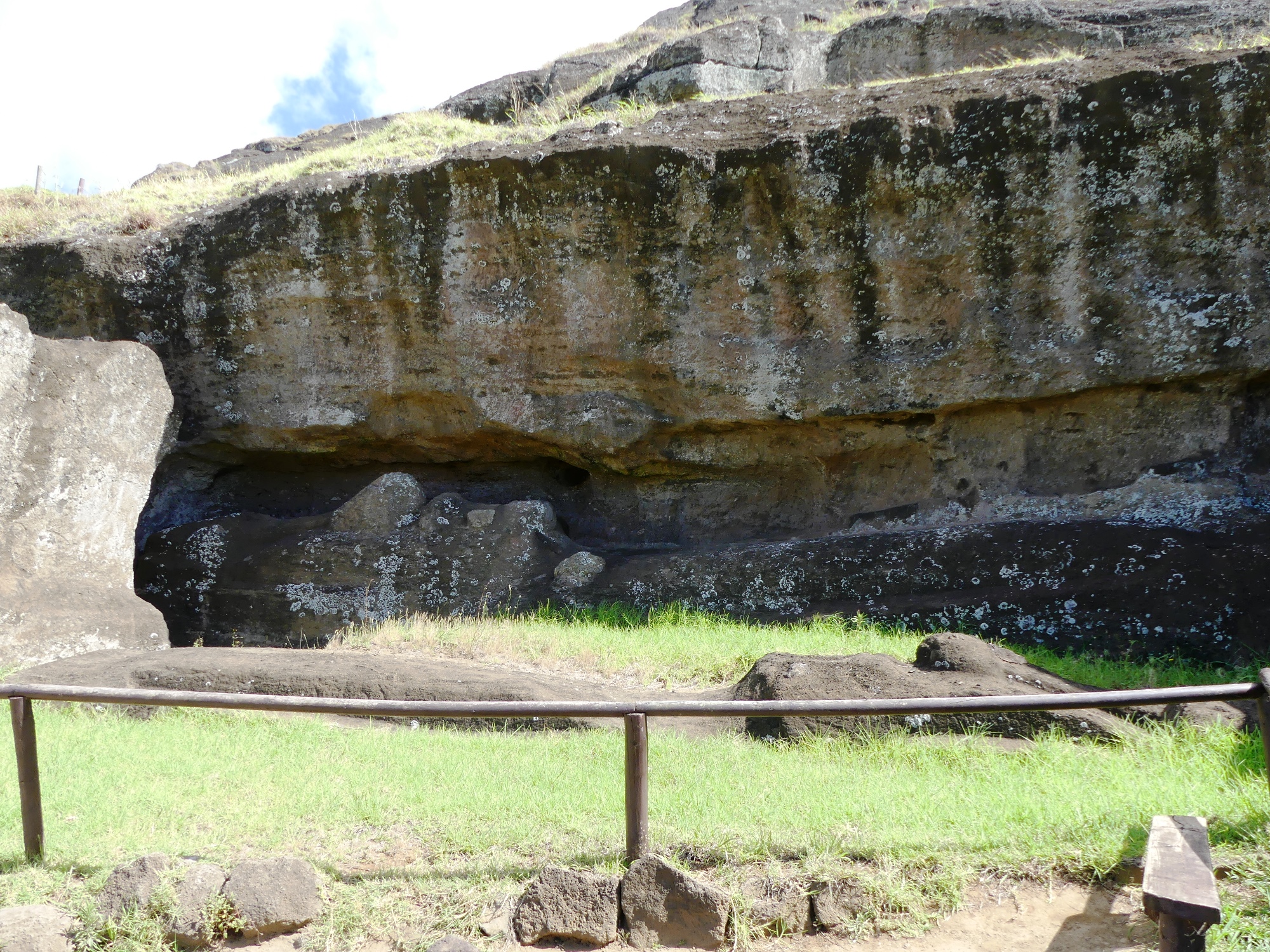
The big figure at the back was left still attached to the mountain, the one in front was finished but never transported
Our next stop was Ahu Tongariki – probably the most exciting site on every tourist’s agenda. This is the famous Ahu with 15 colossal figures of various sizes (the tallest 14m high and the ahu on which they stand is 220m long) looking back towards the distant volcano rock from which they were fashioned. After the obligatory photos it was great to be able to take a moment and just appreciate where you were and what you had seen for the day.
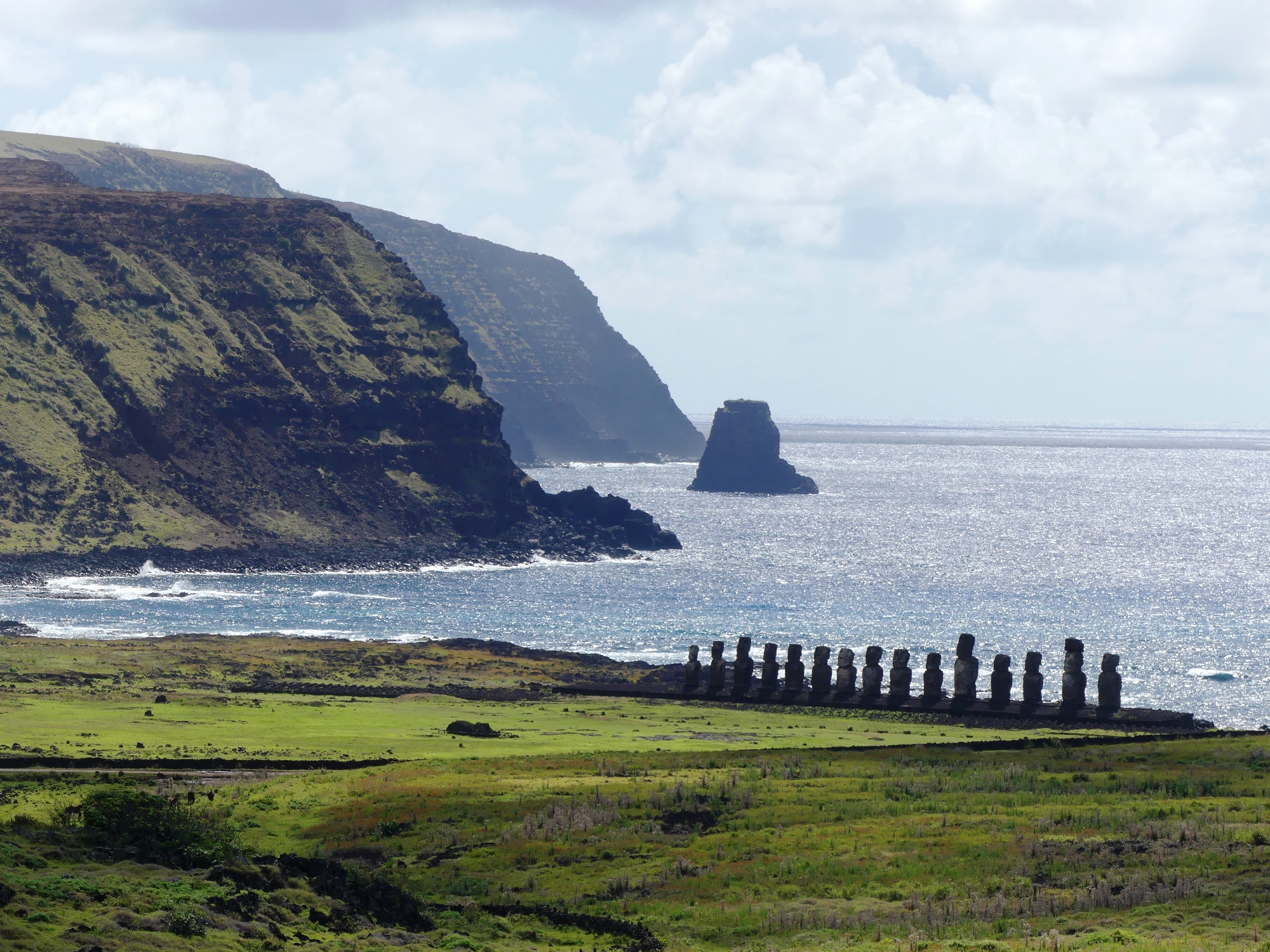
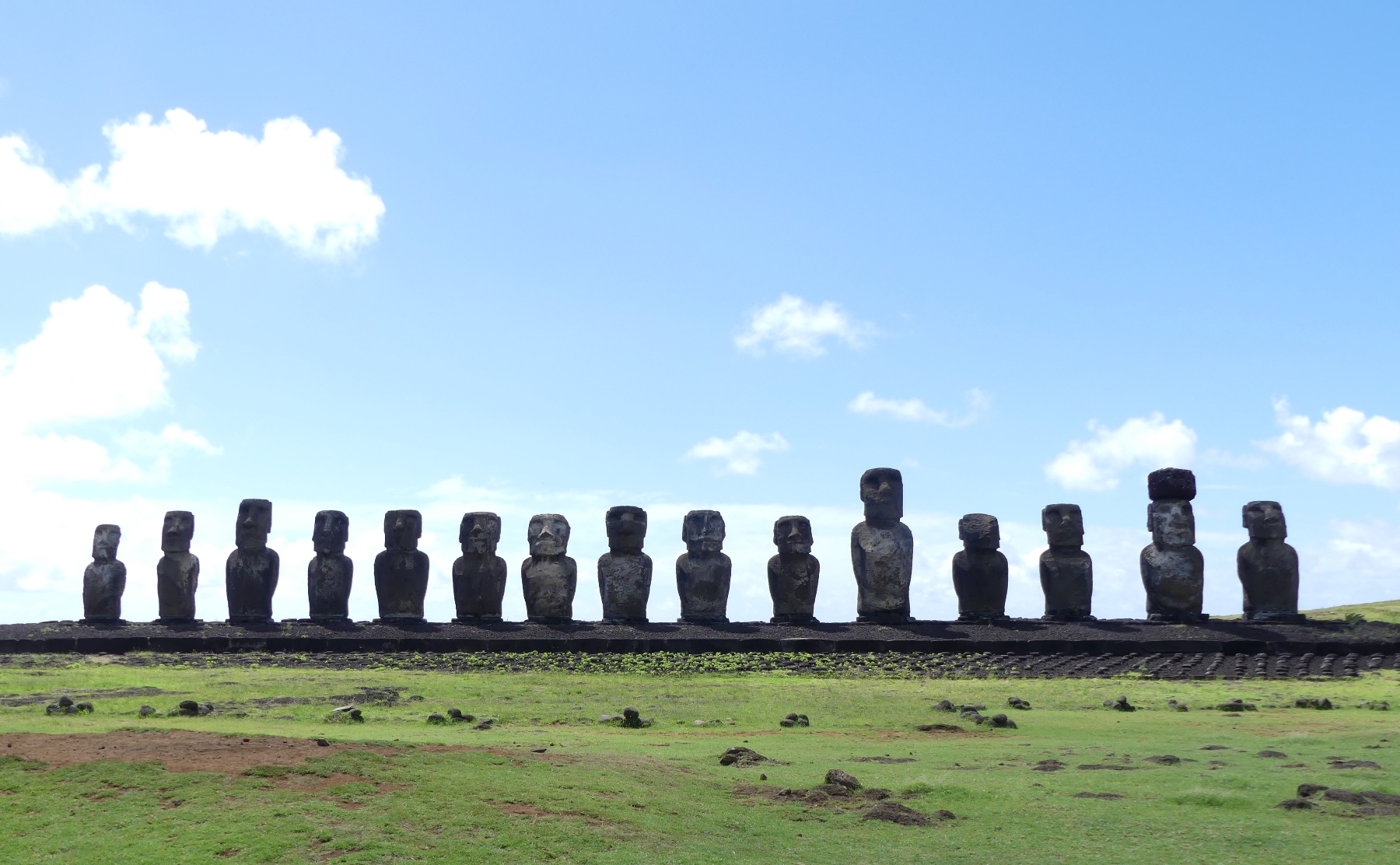
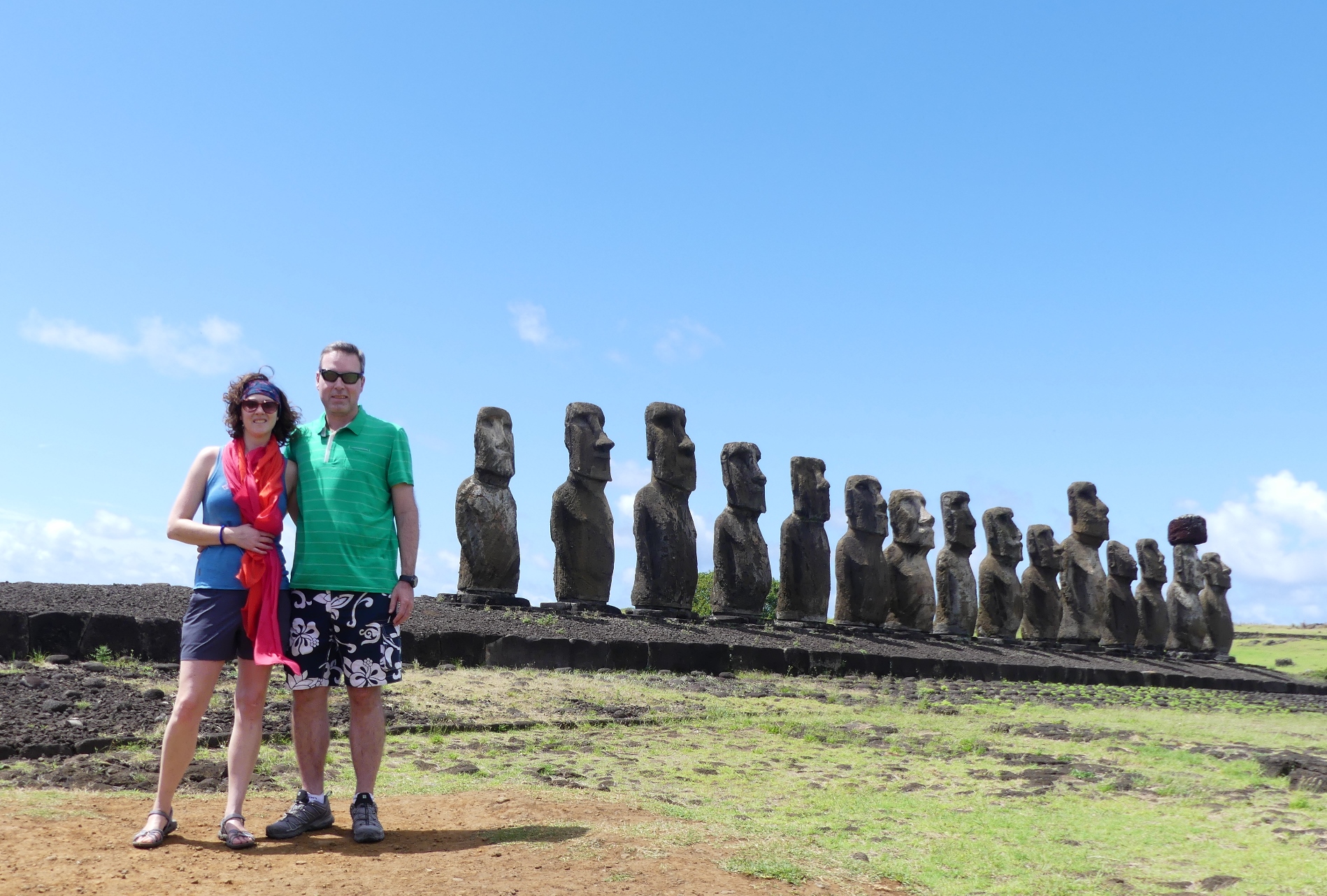
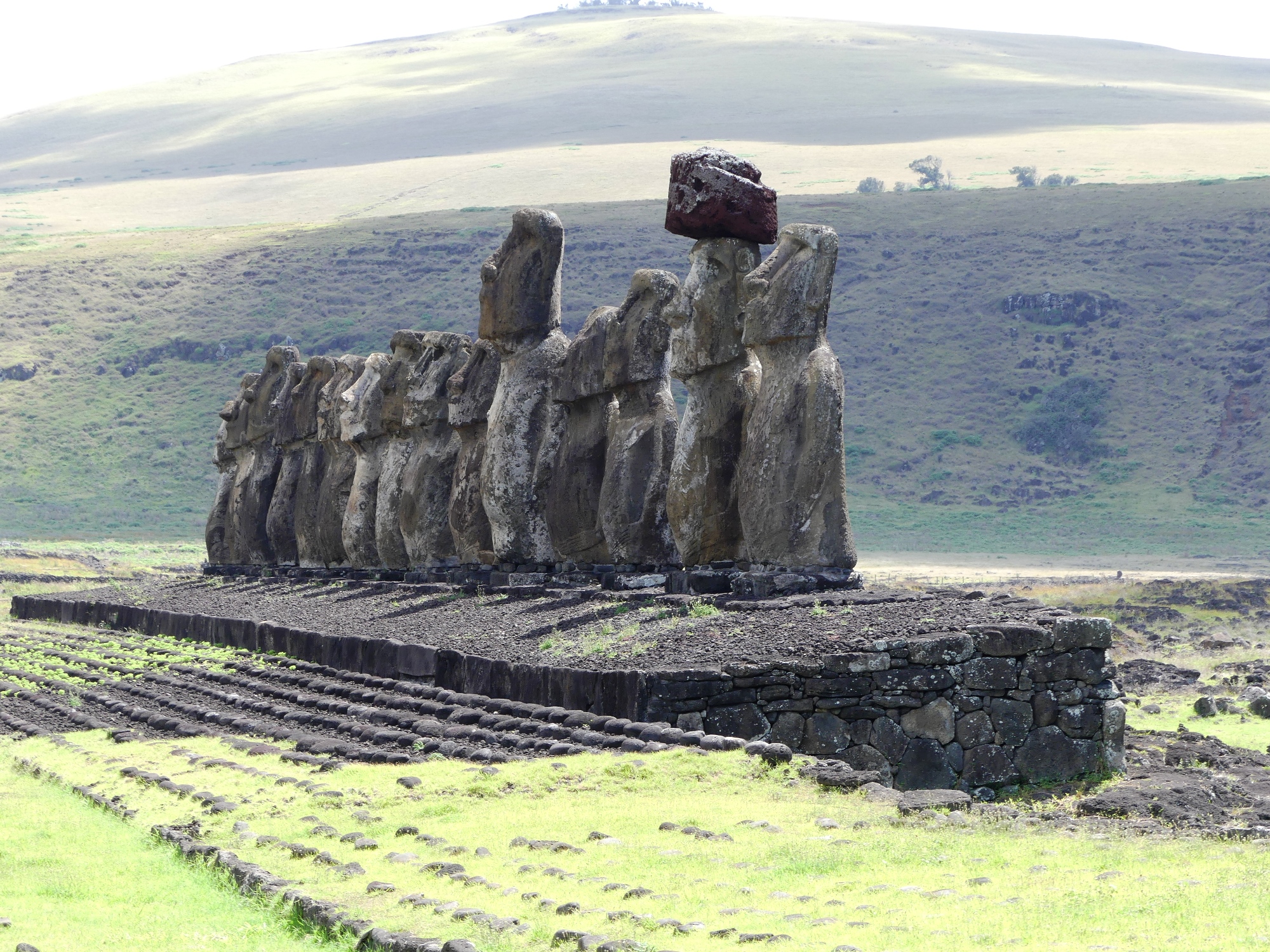
Our last stop was Anakena beach – the island’s only sandy beach. It is the lack of such beaches that has saved Easter Island from the type of predatory tourism that has ruined many other holiday destinations that were turned them into concrete all-inclusives. In ancient times, the king (and later the birdman winner) used to live at Anakena and you could see why. This was quite a prize!

Being a public holiday there were many locals getting bronzed on the beach and children playing near the shore but it was not crowded. With its set of moai protecting the cove I could easily settle in a spot below a palm tree while Adrie was more interested in swimming in the Pacific.
